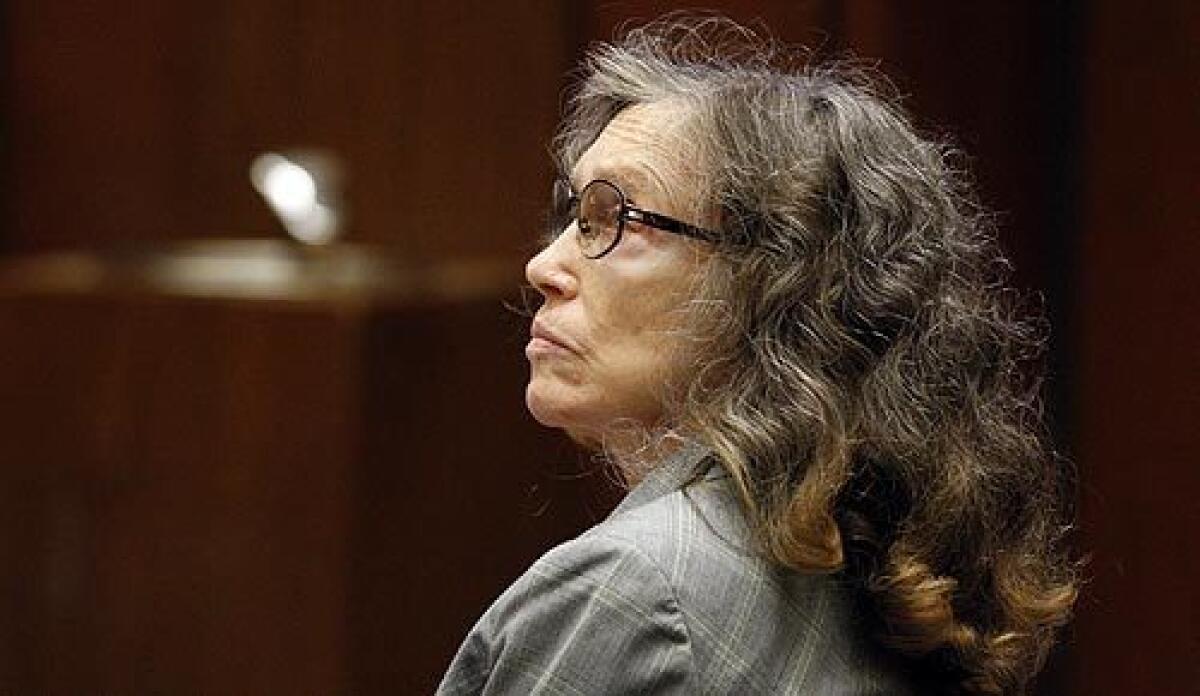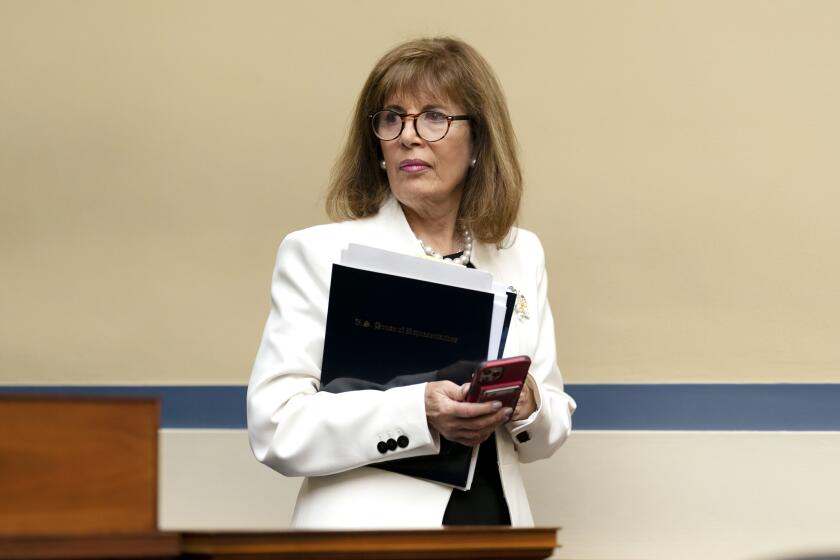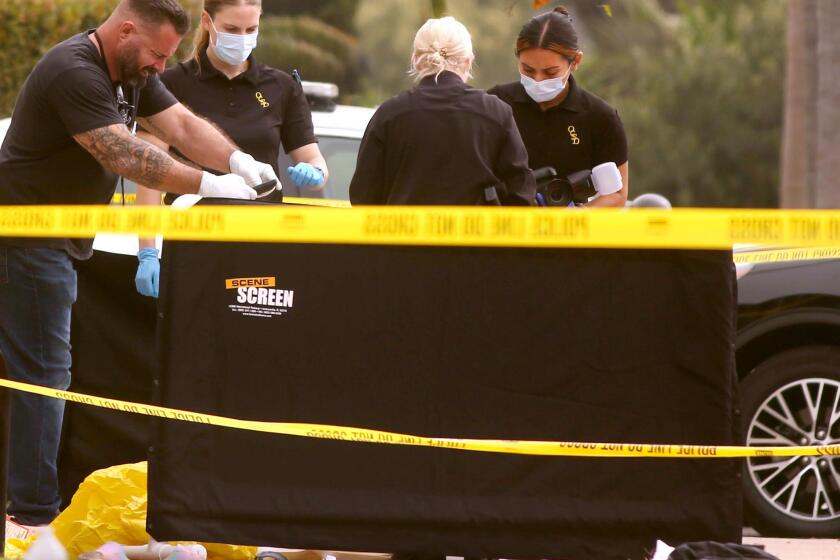Age, gender could play role in hit-and-run verdict

They have sat at the defense table frail as birds, their faces papery and gray, their hands brittle.
The combination of their advanced years and sex makes Helen Golay, 77, and Olga Rutterschmidt, 75, among the rarest of murder defendants.
FOR THE RECORD:
In an earlier caption with this article, Helen Golay and Olga Rutterschmidt’s ages were listed as 75 and 73. Golay is 77 and Rutterschmidt is 75.
As stereotypes go, the demographic they represent defies the coldblooded nature of the killings they are charged with. Authorities say Golay and Rutterschmidt plucked a pair of homeless men off the streets, sheltered them for two years and ran them over with a car to collect life insurance.
With jury deliberations expected to begin today, a question looming over the downtown courtroom is whether the defendants’ age and gender could influence the panel’s verdict. Experts say that both factors could summon a range of potential biases in jurors, but that the women shouldn’t count on any undue sympathy.
“The prosecution has to be worried, somewhere deep down inside, at some level, that one or more jurors will feel sorry for these two old women,” USC law professor Jean Rosenbluth said. “But it’s not enough to overcome the ruthlessness of the crime in the minds of the jury if the evidence is there. It’s pretty bad stuff.”
Only two or three of the 12 jurors appear to be retirement age, and they are men. Three of the panelists are women.
Golay and Rutterschmidt are accused of killing Kenneth McDavid, 50, in 2005, and Paul Vados, 73, in 1999. The men died in staged hit-and-run accidents, according to the prosecution. Their mangled bodies were found in alleys in Hollywood and Westwood.
If convicted, the women face maximum sentences of life in prison without parole.
A Los Angeles County district attorney’s spokeswoman said the office does not keep a historical tally of the age and gender of murder defendants. In the mid-1990s, it prosecuted a woman in her 70s in the shooting death of her estranged son-in-law. Jo Lula Haynes, who pleaded guilty during her trial, died in custody at 76.
In the Golay-Rutterschmidt case, jurors have heard evidence that the defendants collected about $2.8 million in life insurance that they took out on the men, after claiming to be their fiancee, cousin or business partner. The prosecution has alleged that the women housed, fed and monitored the victims for two years, because that is the period after which most insurance policies cannot be contested.
Golay and Rutterschmidt have not taken the stand, and they have turned on each other. In closing arguments, Rutterschmidt’s attorney, Deputy Public Defender Michael Sklar, said the evidence pointed to Golay as the killer, and away from his client.
Golay’s lawyer, Roger Jon Diamond, dismissed that assertion as an empty tactic and insinuated that his client’s daughter, Kecia Golay, was the real killer. Kecia Golay has not been charged in the case.
Diamond also said that Helen Golay was too weak to have carried out the killings. While giving his closing remarks, which continue today, he stood behind Golay several times and gently patted her shoulders, as if to emphasize her slight frame.
“Not capable physically,” he said to the jury. He described the defendants as “two little old ladies.”
Outside court, Diamond said jurors should view Golay “as a grandmotherly type. She is very, very nice.”
Sklar said “yes” when asked if he believed age and gender could sway the jury, but he declined to comment further. Deputy Dist. Atty. Robert Grace shrugged in answer to the same question.
Throughout the trial, before Superior Court Judge David Wesley, the women typically have worn dark skirts and pantsuits, their hair cinder-dull and unruly. They looked much older than they did on the day of their 2006 arrests.
Golay was known for her towering, reddish bouffants, tight-fitting clothes and carefully, if liberally, applied makeup. With her dyed-blond locks and penchant for daily hikes, Rutterschmidt had an earthy youthfulness.
Jonathan Simon, co-chairman of the UC Berkeley Center for Criminal Justice, said the presence of two older women in the dock could evoke a number of responses in jurors -- some favorable to the defendants, others not. “When we see women generally, we either view them as nurturers or as needing protection,” he said. “And age is a proxy for non-threateningness.”
Simon said that could “work against the prosecution.”
Then again, he said, juries can be less forgiving of women when the allegations run counter to the nurturer ideal.
“There can be the archetype of the conniving old lady, the witch,” he said.
Attorney Gloria Allred, who represents the relatives of the victims, said the vulnerability of the destitute men should quell any impulse by jurors to go easy on the defendants.
“One doesn’t often see, even in the movies, except in ‘Arsenic and Old Lace,’ female defendants in a murder case who are in their senior years,” Allred said. “But I think the jurors would have sympathy for the victims.”
More to Read
Start your day right
Sign up for Essential California for news, features and recommendations from the L.A. Times and beyond in your inbox six days a week.
You may occasionally receive promotional content from the Los Angeles Times.





